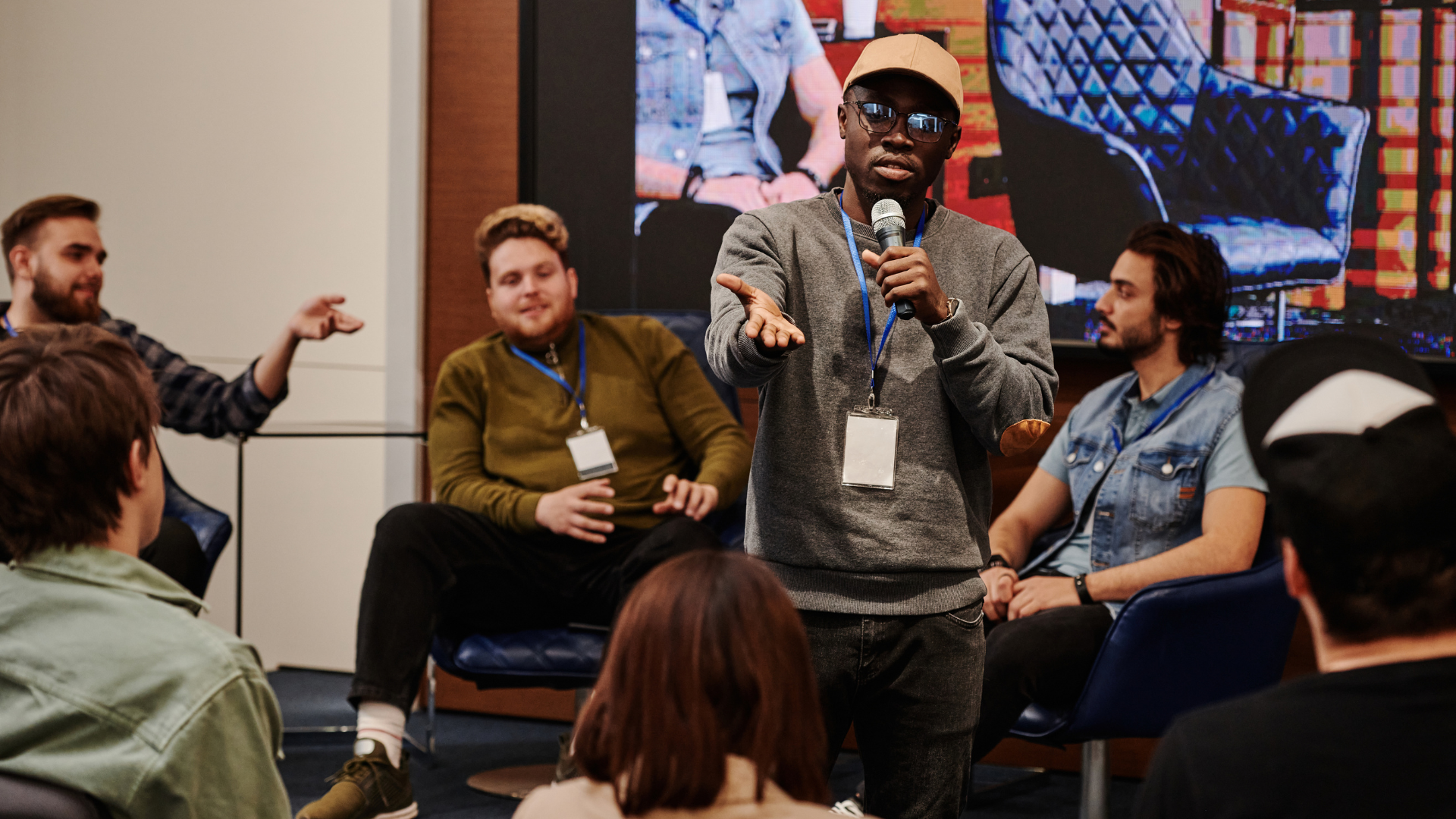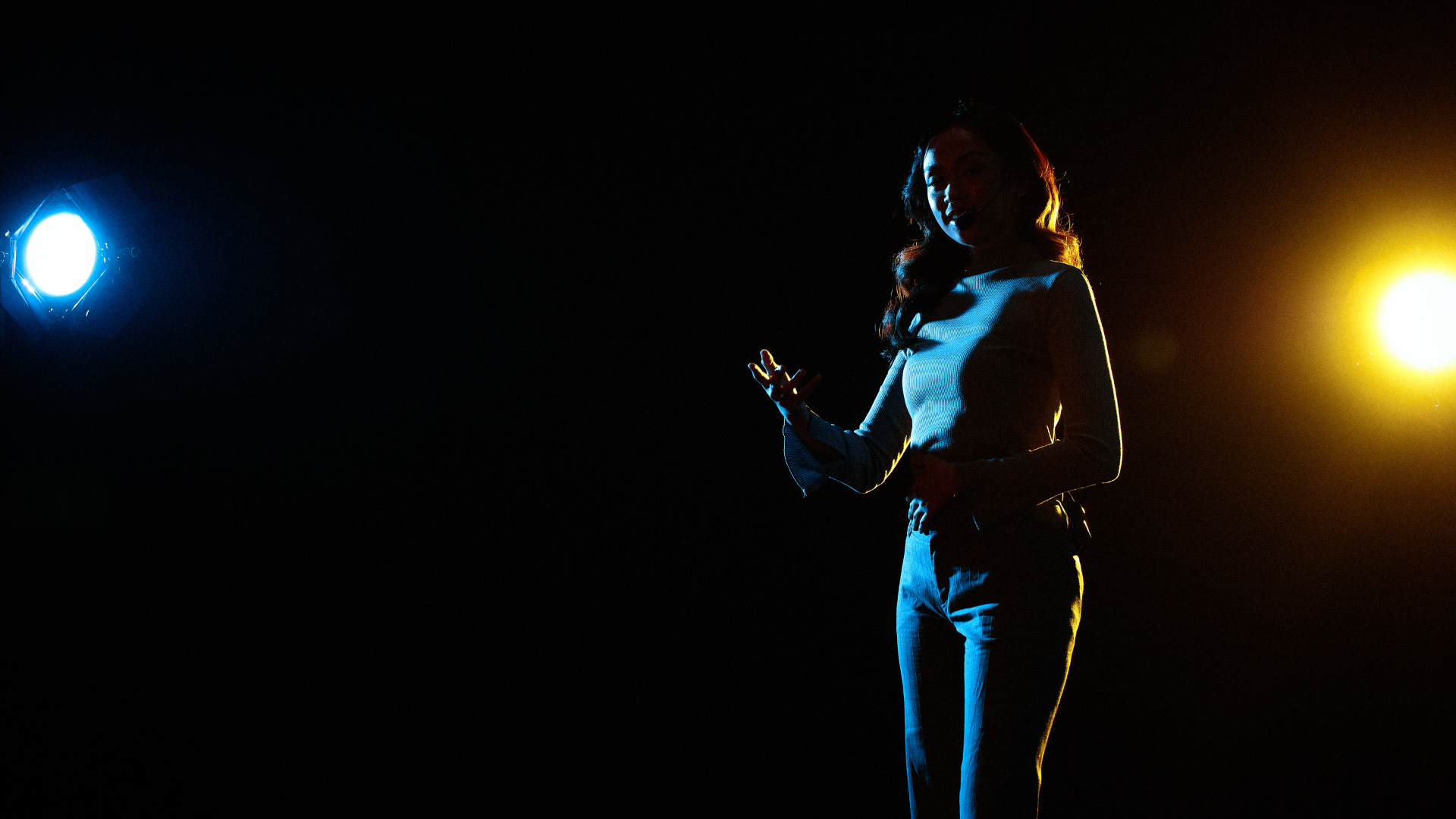Beyond the Surface: Unveiling the Hidden Power of "One Goal, Four Stages" – Implicit Learning, Antifragility, and Emergent Transformation in Workplace Well-being
Beyond the Surface: Unveiling the Hidden Power of "One Goal, Four Stages" – Implicit Learning, Antifragility, and Emergent Transformation in Workplace Well-being
In the realm of corporate well-being, initiatives often focus on readily measurable outcomes: engagement metrics, participation rates, and perhaps some self-reported improvements in stress levels. These are valuable indicators, yet they often scratch only the surface of the transformative potential that truly effective well-being frameworks can unlock. Coach Faisal's "One Goal, Four Stages" approach distinguishes itself by design, not just for its structured simplicity and team-based engagement, but for its capacity to trigger deeper, less immediately apparent yet profoundly impactful changes within individuals and across entire organizations.
This article delves into the hidden power of "One Goal, Four Stages," exploring how it operates beyond conscious goal achievement to tap into the realms of implicit learning and behavioral priming, cultivate organizational antifragility, foster micro-identity shifts, unlock latent creativity and innovation, generate a "narrative of growth," and drive a subtle shift towards intrinsic motivation. These are not merely peripheral benefits; they represent the core of a systemic intervention that fosters a truly transformative culture of well-being and continuous growth.
1. Unlocking Implicit Learning and Behavioral Priming: Rewiring the Brain for Growth
While the explicit focus of "One Goal, Four Stages" is on conscious goal setting and navigating structured growth stages, its power extends far beyond these deliberate actions. The framework subtly engages implicit learning – a form of learning that occurs unconsciously and without intentional effort (1). By repeatedly guiding employees through the four-stage cycle – Awareness & Intention, Recognizing Potential, Commitment to Change, and Integration for Mastery – month after month, the framework primes their brains for growth, creating a mental "template" for approaching challenges and opportunities.
Beyond Conscious Goal Achievement:
It's crucial to recognize that the transformative impact isn't solely contingent on achieving the specific "One Goal" each month. Even if an employee doesn't fully reach their stated goal, the process itself of cyclical engagement with growth stages has a profound effect. This repeated exposure rewires neural pathways (2) towards a growth-oriented mindset, much like repeated practice strengthens a muscle memory.
This is akin to behavioral priming, a psychological phenomenon where exposure to a stimulus influences subsequent behavior, often without conscious awareness (3). The "One Goal, Four Stages" framework acts as a consistent, positive stimulus, priming employees to approach various aspects of their work and lives with a growth-oriented lens. Over time, this behavioral priming manifests as employees becoming more naturally proactive, resilient, and solution-focused, even outside the formal program's context.
Science-Backed Reference:
- [1] Implicit Learning: Seger, C. A. (2019). Implicit learning. Neuropsychology review, 29(2), 159–178. https://www.ncbi.nlm.nih.gov/pmc/articles/PMC6442995/ - This article provides a comprehensive overview of implicit learning, its neural mechanisms, and its significance in human behavior.
- [2] Neural Pathways and Neuroplasticity: Doidge, N. (2007). The brain that changes itself: Stories of personal triumph from the frontiers of brain science. Viking. https://www.brainfacts.org/brain-anatomy-and-function/cells-and-circuits/2012/neurons-and-synapses - This book and the linked resource explore neuroplasticity, the brain's ability to reorganize itself by forming new neural connections throughout life, underpinning the concept of "rewiring" through repeated experiences.
- [3] Behavioral Priming: Bargh, J. A., Chen, M., & Burrows, L. (1996). Automaticity of social behavior: Direct effects of trait construct and stereotype activation on action. Journal of Personality and Social Psychology, 71(2), 230–244. https://www.psychologytoday.com/us/basics/priming - This seminal paper and the linked Psychology Today article introduce the concept of behavioral priming and its subtle yet powerful influence on human action.
2. Cultivating Organizational Antifragility: Thriving in Uncertainty
Resilience, the ability to bounce back from adversity, is often lauded as a crucial organizational trait. However, "One Goal, Four Stages" goes further, fostering organizational antifragility – a concept popularized by Nassim Nicholas Taleb, describing systems that not only withstand shocks but actually become stronger from volatility and disorder (4).
Beyond Resilience:
Resilience is about maintaining equilibrium; antifragility is about growth through disturbance. By consistently engaging employees in well-being goals and guiding them through the growth stages, "One Goal, Four Stages" cultivates a workforce and an organization that are not merely resilient, but actively adaptable, resourceful, and innovative in the face of challenges.
The framework, by its very design, introduces a controlled form of "stress" – the challenge of personal growth and change. When employees successfully navigate this "stress," they develop enhanced coping mechanisms, problem-solving skills, and a greater tolerance for ambiguity. Repeated across the organization, this translates into a collective capacity to thrive in unpredictable environments. It’s not solely about mitigating negative stress; it’s about strategically leveraging the process of growth itself to build organizational strength and agility.
Science-Backed Reference:
- [4] Antifragility: Taleb, N. N. (2012). Antifragile: Things that gain from disorder. Random House. https://www.amazon.com/Antifragile-Things-that-Gain-Disorder/dp/0812979680 - Taleb's book provides the foundational theory of antifragility, distinguishing it from resilience and robustness, and illustrating its importance in complex systems, including organizations.
3. Fostering Micro-Identity Shifts and Collective Self-Image: Defining "Who We Are"
Traditional skill development programs aim to enhance employee competencies. Vision alignment initiatives seek to unify teams around shared goals. "One Goal, Four Stages" operates at a more fundamental level, triggering subtle yet powerful micro-identity shifts within employees and contributing to a transformative collective self-image shift for the company.
Beyond Skill Development:
By consistently engaging in well-being focused growth, individuals begin to subtly alter their self-perception. They start to see themselves not just as employees fulfilling tasks, but as individuals who are proactive about their well-being, committed to continuous growth, and integral parts of a company that genuinely values personal development. These individual micro-identity shifts, multiplied across the organization, coalesce into a significant collective self-image transformation.
The company's identity evolves beyond "what it does" (its products or services) to encompass "who it is" – a growth-oriented, well-being-focused organization. This is a far deeper and more resonant form of cultural transformation than simply improving skills or aligning with a vision statement. It shapes the very essence of the organizational identity, impacting employee morale, attraction of top talent, and long-term brand reputation.
Science-Backed Reference:
- Micro-Identity Shifts: Gee, J. P. (2000). Identity as an analytic lens for research in education. Review of research in education, 25, 99-125. [Search for academic articles on "identity shift" or "identity change" in psychology and sociology databases like JSTOR or Google Scholar] - While "micro-identity shifts" is a nuanced term, the broader concept of identity change is well-established in social sciences. Research on identity theory and social identity theory explores how individuals' self-perceptions are fluid and influenced by their experiences and social contexts.
4. Unlocking Latent Creativity and Innovation: Fueling Ingenuity Through Well-being
Conventional approaches to boosting innovation often involve prescribed brainstorming sessions, dedicated innovation labs, or external consultants. "One Goal, Four Stages" takes a more organic and potentially more potent route: it unlocks latent creativity and innovation within the workforce by nurturing employee well-being.
Beyond Productivity:
While improved productivity is a direct benefit of enhanced well-being, the framework's impact on creativity and innovation is often less direct but profoundly significant. When employees feel genuinely supported in their well-being and personal growth, a confluence of factors creates fertile ground for emergent ingenuity:
- Reduced Cognitive Load: Decreased stress and overwhelm free up mental bandwidth, allowing for more expansive and creative thinking (5).
- Increased Psychological Safety: A culture that prioritizes growth and support fosters psychological safety – a crucial element for risk-taking and experimentation, both essential for innovation (6).
- Enhanced Emotional Intelligence: Focusing on well-being often cultivates self-awareness and empathy, core components of creative collaboration and innovative problem-solving (7).
- Greater Sense of Purpose and Meaning: Well-being initiatives, when meaningfully linked to personal growth, can tap into a deeper sense of purpose, fueling intrinsic motivation and creative drive (8).
These interconnected factors, nurtured by "One Goal, Four Stages," create an organizational environment where creativity and innovation are not just mandated or prescribed, but emerge organically from a workforce that is mentally, emotionally, and psychologically primed for ingenuity.
Science-Backed Reference:
- [5] Cognitive Load and Creativity: Rock, D., & Schwartz, J. (2006). Quiet leadership: Six steps to transforming performance at work. HarperBusiness. https://hbr.org/2014/12/how-to-manage-your-bodys-cognitive-load - This article and related work on cognitive load theory explain how reducing mental clutter and stress enhances cognitive resources available for creative thinking and problem-solving.
- [6] Psychological Safety and Innovation: Edmondson, A. C. (1999). Psychological safety and learning behavior in work teams. Administrative science quarterly, 350-383. https://www.ncbi.nlm.nih.gov/pmc/articles/PMC8487387/ - This seminal paper and subsequent research on psychological safety demonstrate its crucial role in fostering innovation and learning within teams and organizations.
- [7] Emotional Intelligence at Work: Goleman, D. (1998). Working with emotional intelligence. Bantam Books. https://www.helpguide.org/articles/mental-health/emotional-intelligence-at-work.htm - Goleman's work and resources like HelpGuide.org highlight the importance of emotional intelligence in collaboration, communication, and creative problem-solving in the workplace.
- [8] Purpose and Meaning in the Workplace: Frankl, V. E. (1959). Man's search for meaning. Beacon Press. https://positivepsychology.com/meaning-purpose-workplace/ - Frankl's work and articles on positive psychology underscore the motivational power of purpose and meaning, and how connecting well-being to personal growth can fuel intrinsic drive and creative energy.
5. Creating a "Narrative of Growth" and Organizational Storytelling: Weaving a Compelling Identity
Many companies struggle to articulate a compelling and authentic organizational narrative. "One Goal, Four Stages" provides a unique and organic pathway to generate a powerful "narrative of growth" that resonates both internally and externally.
Beyond Vision Alignment:
While vision statements are often top-down pronouncements, the "narrative of growth" emerges bottom-up, organically, from the lived experiences of employees. As individuals share their journeys, challenges, and triumphs in weekly workshops and informal interactions, a collective story of growth begins to take shape.
This narrative becomes a potent force for:
- Internal Branding: Reinforcing the company's identity as a place that not only talks about but actively invests in employee growth and well-being.
- Employee Retention: Creating a deep sense of shared purpose and belonging, making employees feel valued and more likely to commit long-term.
- External Employer Branding: Attracting top talent who are drawn to organizations with a demonstrably strong growth culture and a genuine commitment to employee well-being.
- Organizational Storytelling: Providing a rich source of authentic and compelling stories that can be used in internal and external communications to vividly illustrate the company's values and impact.
This "narrative of growth," built from the ground up by employee voices, is far more powerful and resonant than any top-down marketing campaign. It becomes a living, breathing testament to the company's core values and its commitment to the holistic development of its people.
Science-Backed Reference:
- Narrative Psychology and Organizational Storytelling: Bruner, J. (1991). The narrative construction of reality. Critical inquiry, 1-21. [Search for academic articles on "narrative psychology in organizations" or "organizational storytelling" in business and communication databases] - Narrative psychology and research on organizational storytelling demonstrate the power of narratives in shaping identity, culture, and collective meaning within organizations. Stories are more memorable and impactful than abstract statements of values.
6. Subtle Shift from Extrinsic to Intrinsic Motivation: Fueling Well-being from Within
Many well-being programs rely heavily on extrinsic motivators: incentives, prizes, and external recognition. While these can boost initial engagement, "One Goal, Four Stages" aims for a more sustainable and profound shift – fostering intrinsic motivation for well-being and growth.
Beyond Engagement Metrics:
Engagement metrics are valuable for tracking participation. However, the true power of "One Goal, Four Stages" lies in its potential to cultivate a deeper, more self-sustaining drive for well-being that comes from within. While extrinsic rewards may be part of the program, the primary drivers become internal:
- Sense of Personal Mastery: Successfully navigating the growth stages and achieving personally meaningful goals builds intrinsic satisfaction and a desire for further mastery (9).
- Increased Self-Efficacy: Experiencing tangible personal growth boosts self-confidence and the belief in one's own ability to achieve future goals and overcome challenges (10).
- Alignment with Values: When well-being goals are chosen based on personal relevance and alignment with individual values, motivation becomes self-sustaining and less dependent on external pressures (11).
- Joy of Learning and Growth: The framework can cultivate a genuine appreciation for the process of learning and growth itself, making it intrinsically rewarding – a key element of self-determined motivation (12).
This shift towards intrinsic motivation is far more robust and enduring than programs that primarily rely on external incentives. It cultivates a workforce that is not just compliant with well-being initiatives, but genuinely invested in their own holistic growth and development.
Science-Backed Reference:
- [9] Self-Determination Theory and Intrinsic Motivation: Deci, E. L., & Ryan, R. M. (2000). Self-determination theory and the facilitation of intrinsic motivation, social development, and well-being. American psychologist, 55(1), 68–78. https://selfdeterminationtheory.org/SDT/theory/ - This foundational paper outlines Self-Determination Theory, explaining the crucial role of autonomy, competence, and relatedness in fostering intrinsic motivation.
- [10] Self-Efficacy and Motivation: Bandura, A. (1977). Self-efficacy: toward a unifying theory of behavioral change. Psychological review, 84(2), 191–215. https://www.ncbi.nlm.nih.gov/pmc/articles/PMC6681185/ - Bandura's work on self-efficacy theory explains how belief in one's ability to succeed directly impacts motivation and goal achievement.
- [11] Values-Based Leadership: Fairholm, G. W. (2004). Leadership and the culture of trust. Greenwood Publishing Group. https://www.mindtools.com/au/blog/values-based-leadership - Resources on values-based leadership and related concepts highlight how aligning actions and goals with personal values enhances intrinsic motivation and commitment.
- [12] Intrinsic Motivation: Ryan, R. M., & Deci, E. L. (2020). Intrinsic and extrinsic motivation from a self-determination theory perspective: Definitions, theory, practices, and future directions. Contemporary educational psychology, 61, 101860. https://www.verywellmind.com/what-is-intrinsic-motivation-2795385 - This article and resources like Verywell Mind provide a clear definition and exploration of intrinsic motivation, contrasting it with extrinsic motivation and highlighting its benefits.
Conclusion: Emergent Transformation – The Hidden Power of "One Goal, Four Stages"
Coach Faisal's "One Goal, Four Stages" framework is more than a well-structured well-being program. It is a systemic intervention designed to trigger emergent and often overlooked transformations within individuals and across organizations. By tapping into implicit learning, cultivating antifragility, fostering identity shifts, unlocking creativity, generating a narrative of growth, and shifting motivation inwards, it creates a virtuous cycle of well-being and continuous growth. https://www.bycoachfaisal.co.uk/
These deeper, less obvious impacts are where the true transformative power of "One Goal, Four Stages" resides. It's not just about ticking boxes on well-being metrics; it's about fundamentally rewiring the organizational DNA towards a culture of thriving – a culture where growth, resilience, innovation, and a shared sense of purpose are not just aspirations, but lived realities, fueled from within. For organizations seeking not just incremental improvements but profound and lasting transformation in their well-being culture, "One Goal, Four Stages" offers a uniquely powerful and scientifically grounded pathway forward.
https://www.tiktok.com/@bycoachfaisal









